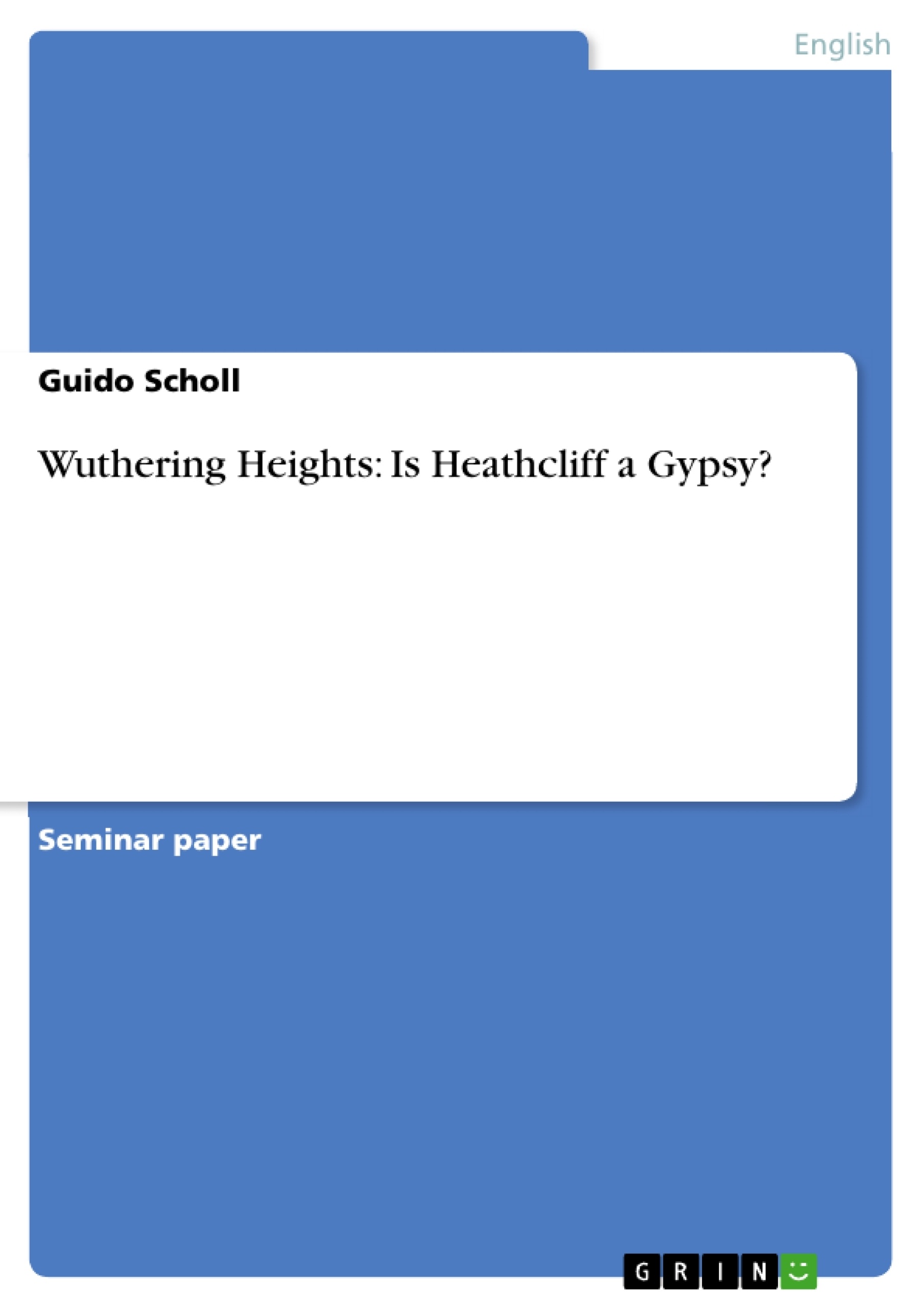1. Introduction
“Wuthering Heights” is Emily Bronte’s (1818-1848) only novel and was published in 1847. It became tremendously popular and is today looked upon as one the most important works of its period especially in terms of describing nature. It is also interesting, though, to examine the description of its characters, especially that of Heathcliff, whose descent and parentage is not unveiled in the story. The reader is tempted into thinking that he might be a Gypsy by heritage.
The Question, whether the main character of Emily Bronte’s novel “Wuthering Heights”, the foundling Heathcliff, is a Gypsy, must certainly be approached out of two different angles. The first thing to discuss is his mere appearance in the novel and the second thing is the examination of how Emily Bronte presents him.
The difference of these two ways of approaching the question is one of the very basic features of literature as it is understood in our culture: what does the reader perceive when perusing a text and what is the author’s intention for the reader’s perception. It is certainly difficult to trace down what the author’s intention really is and to separate that from one’s own understanding of a piece of literature but one may at least try to approach this task by looking at the story first and then examine the way of representation.
Thus, the first step in this paper will be to show which features classify Heathcliff as being a Gypsy in the fashion of the stereotypical Gypsy of 19th century literature and which features might oppose such a view. The second step will be to describe Emily Bronte’s way of representation.



